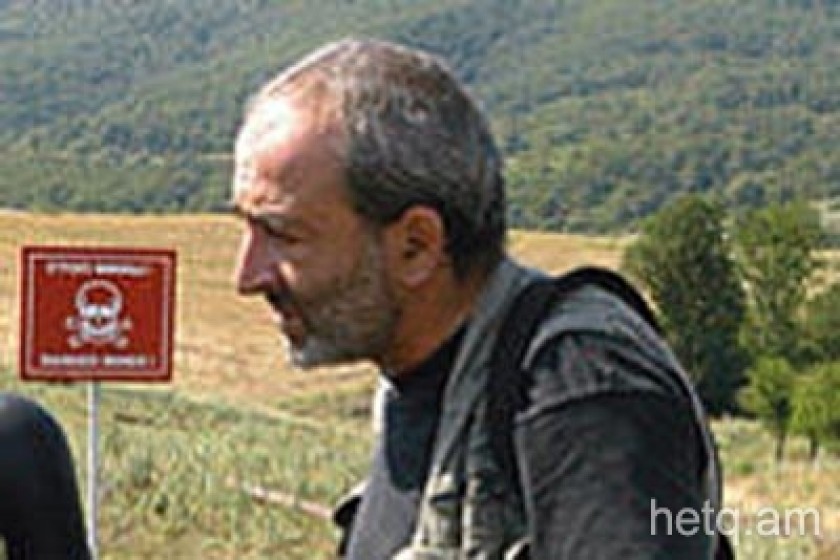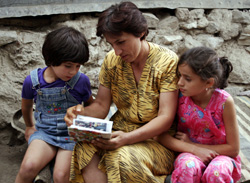
The Hidden War
“Children begin to perceive the world through their environment. Children have a unique ability to get in anywhere, pick anything up and look at it. Children continue to search and dig in even if they sense danger. They usually lose their sight, get wounded in the face, arms, and legs. That is, if they survive the explosion,” said photographer German Avagyan, who has taken photos of fifty children who were injured by land mines and unexploded ammunition in Karabakh and border regions of Armenia. Avagyan has been trying for years to have a book put out that could serve as a textbook for schoolchildren.
He wants to make children aware of the consequences of carelessly handling ammunition through photos and stories of young victims. He has not succeeded in getting his book published yet, and signs that warn “Danger! Mines!” are the only thing separating he mine field from the nearby settlements.
Before I went to Hadrut I asked German about mine explosions in this region of Karabakh. He remembered Ernest Zalinyan at once, a nine year-old boy who was killed playing with a type of mine called a “frog”. He recalled a photograph Ernest's sisters had shown him of the dead boy. His sister Lilit was wounded in the explosion herself; she still has a fragment of the mine in her head, and suffers vision problems.
I went to the village of Ukhtadzor in the Hadrut region, made inquiries, and found Zalinyan's house. The visit of a stranger was unexpected there. I was well informed about what had happened, so I just wanted to see how the family that had lost its only son to the ongoing war was living.
 Ernest's mother Alvard Zalinyan remembered the accident in detail. “The kids were playing in the garden, I was working in the house, and suddenly we heard a loud explosion.” The accident that seemed like a newspaper headline changed the Zalinyans' life fundamentally. “We talk and laugh,” Alvard said, “but our hearts are not happy. My heart is broken.”
Ernest's mother Alvard Zalinyan remembered the accident in detail. “The kids were playing in the garden, I was working in the house, and suddenly we heard a loud explosion.” The accident that seemed like a newspaper headline changed the Zalinyans' life fundamentally. “We talk and laugh,” Alvard said, “but our hearts are not happy. My heart is broken.”
If not for the accident, Ernest would be in 10 th grade this year. The most painful thing for Alvard is that her son saw so little in his nine years. “He was born during the war, there was no sugar, he never had any nice clothes, ” she said, quickly wiping away her tears. “I looked after him, the war ended and the peace came, the time for a quiet and happy life came, but he is gone, and that is terrible,” she went on. She added that in her current grief she remembers the war, when their house was bombed every day, with fondness.
During the war there was hope at least, hope that the military operations would finish sooner or later and her family, which survived the war without losing any one would have a peaceful and happy life.
Some fifty or sixty people are killed each year in Nagorno Karabakh by land mines and other unexploded ammunition, according to the British organization Hallo Trust, which is involved in clearing mines. There have been over 1,000 victims since 1993. How many more will there be if the war is still hiding in many parts of Nagorno Karabakh twelve years after the ceasefire?
 Videos
Videos Photos
Photos
Write a comment